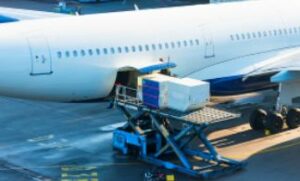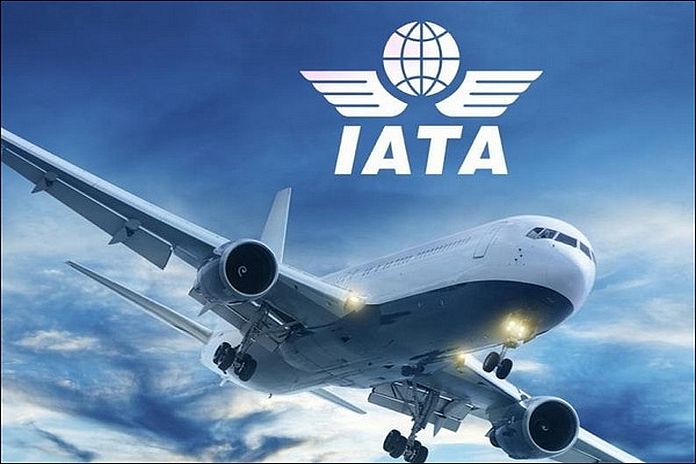GENEVA, Switzerland – The International Air Transport Association (IATA) released data for July 2024 global passenger demand and data for July 2024 global air cargo markets showing continuing strong annual growth in demand.
July 2024 global passenger demand:
- Total demand, measured in revenue passenger kilometers (RPK), was up 8.0 percent compared to July 2023. Total capacity, measured in available seat kilometers (ASK), was up 7.4 percent year-on-year. The July load factor was 86.0 percent (+0.5ppt compared to July 2023). There was no significant negative demand impact from the CrowdStrike IT outage on 19 July.
- International demand rose 10.1 percent compared to July 2023. Capacity was up 10.5 percent year-on-year and the load factor fell to 85.9 percent (-0.3ppt compared to July 2023).
- Domestic demand rose 4.8 percent compared to July 2023. Capacity was up 2.8 percent year-on-year and the load factor was 86.1 percent (+1.7ppt compared to July 2023).
“July was another positive month. In fact, passenger demand hit an all-time high for the industry and in all regions except Africa, despite significant disruption caused by the CrowdStrike IT outage,” said Willie Walsh, IATA’s director-general.
“The winding down of the peak northern summer season is a reminder of how much people depend on flying. As the mix of travellers shift from leisure to business, aviation’s many roles are evident – reuniting families, enabling exploration, and powering commerce. People need and want to fly. And they are doing that in great numbers. Load factors are at the practicable maximum.
“But persistent supply chain bottlenecks have made deploying the capacity to meet the need to travel more challenging. As much of the world returns from vacation, there is an urgent call for manufacturers and suppliers to resolve their supply chain issues so that air travel remains accessible and affordable to all those who rely on it,” said Walsh.
Regional breakdown – international passenger markets
All regions showed strong growth for international passenger markets in July 2024 compared to July 2023, with signs that many markets are returning to long-term growth trends after the post-pandemic bounce back.
Asia-Pacific airlines’ growth remained strong, with a 19.1 percent year-on-year increase in demand. Capacity increased 20.3 percent year-on-year and the load factor was 83.8 percent (-0.8ppt compared to July 2023). Most Asia routes have yet to exceed 2019 levels, with the exception of the Asia-Middle East route.
European carriers saw an 8.3 percent year-on-year increase in demand. Capacity increased 8.1 percent year-on-year, and the load factor was 87.5 percent (+0.2ppt compared to July 2023). In terms of major international routes, the Europe-Asia route expanded fastest, reflecting this is still to surpass 2019 levels.
Middle Eastern carriers saw a 5.8 percent year-on-year increase in demand. Capacity increased 5.5 percent year-on-year and the load factor was 84.1 percent (+0.3ppt compared to July 2023).
North American carriers saw a 5.3 percent year-on-year increase in demand. Capacity increased 6.3 percent year-on-year, and the load factor was 89.4 percent (-0.8 ppt compared to July 2023), the highest among regions.
Latin American airlines saw a 13.4 percent year-on-year increase in demand. Capacity climbed 15.7 percent year-on-year. The load factor was 87.5 percent (-1.7ppt compared to July 2023). While hurricane Beryl had a strong localized impact in parts of the Caribbean, the Gulf of Mexico and southern United States, this did not significantly dampen demand region-wide.
African airlines saw a 7.4 percent year-on-year increase in demand. Capacity was up 6.7 percent year-on-year. The load factor rose to 74.3 percent (+0.5ppt compared to July 2023).
Domestic passenger markets
Domestic demand increased in July, with solid growth resulting in all key markets, bar India, reaching all-time highs. Brazil once again expanded fastest, while Japan and Australia rebounded from the previous month’s negative growth.
View the July Air Passenger Market Analysis

July 2024 global air cargo markets:
Total demand, measured in cargo tonne-kilometers (CTKs*), rose by 13.6 percent compared to July 2023 levels (14.3% for international operations). This is the eighth consecutive month of double-digit year-on-year growth, with overall levels reaching heights not seen since the record peaks of 2021.
Capacity, measured in available cargo tonne-kilometers (ACTKs), increased by 8.3 percent compared to July 2023 (10.1% for international operations). This was largely related to the growth in international belly capacity, which rose 12.8 percent on the strength of passenger markets and balancing the 6.9 percent growth of international freighter capacity. It should be noted that the increase in belly capacity is the lowest in 40 months whereas the growth in freighter capacity is the highest since an exceptional jump was recorded in January 2024.
“Air cargo demand hit record highs year-to-date in July with strong growth across all regions. The air cargo business continues to benefit from growth in global trade, booming e-commerce and capacity constraints on maritime shipping. With the peak season still to come, it is shaping to be a very strong year for air cargo. And airlines have proven adept at navigating political and economic uncertainties to flexibly meet emerging demand trends,” said Willie Walsh, IATA’s director-general.
Factors in the operating environment
In July, the Purchasing Managers Index (PMIs) for global manufacturing output indicated expansion at 50.2. Meanwhile, the global new export orders PMI continued to hover below the 50-mark at 49.4, a marker for contraction.
Industrial production stayed level in July month-on-month and global cross-border trade increased 0.7 percent.
Inflation remained relatively stable in July in the US, Japan, and the EU, with inflation rates of 2.9 percent, 2.8 percent, and 2.8 percent, respectively. Meanwhile, China’s inflation rate increased 0.3 percentage points to 0.6 percent, the highest level in five months.
June regional performance
Asia-Pacific airlines saw 17.6 percent year-on-year demand growth for air cargo in July – the strongest of all regions. Demand on the Within-Asia trade lane grew by 19.8 percent year-on-year, while the Europe-Asia, Middle East-Asia, and Asia-Africa trade lanes rose by 17.9 percent, 15.9 and 15.4 percent respectively. Capacity increased by 11.3 percent year-on-year.
North American carriers saw 8.7 percent year-on-year demand growth for air cargo in July. Growth was hampered in part by flight cancelations and airport closures in the US and the Caribbean in relation to Hurricane Beryl. Demand on the Asia-North America trade lane, the largest trade lane by volume, grew by 10.8 percent year-on-year, while the North America-Europe route saw a modest increase of 5.3 percent. July capacity increased by 7.0 percent year-on-year.
European carriers saw 13.7 percent year-on-year demand growth for air cargo in July. The Middle East–Europe trade lane led growth, up 32.2 percent, maintaining a streak of double-digit annual growth that originated in September 2023. The Europe–Asia route, the second largest market, was up 17.9 percent. Within Europe also saw double-digit growth, up 15.5 percent. July capacity increased 7.6 percent year-on-year.
Middle Eastern carriers saw 14.7 percent year-on-year demand growth for air cargo in July. As mentioned above, the Middle East–Europe trade lane performed particularly well surging 32.2 percent, ahead of Middle East-Asia which grew by 15.9 percent year-on-year. July capacity increased 4.4 percent year-on-year.
Latin American carriers saw 11.1 percent year-on-year demand growth for air cargo in July. As with North American carriers, growth was hampered in part by flight cancelations and airport closures in the US and the Caribbean related to Hurricane Beryl. Capacity increased 9.4 percent year-on-year.
African airlines saw 6.2 percent year-on-year demand growth for air cargo in July – the lowest of all regions and their lowest recorded figure in 2024. Demand on the Africa–Asia market increased by 15.4 percent compared to July 2023. July capacity increased by 10.5 percent year-on-year.





